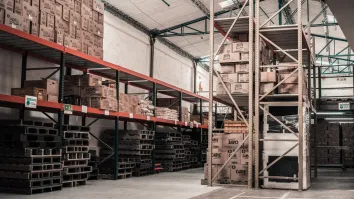
This region will be a major player in Tokyo’s office market
The area attracts tech giants such as Microsoft, Samsung, and Amazon.
On course to position itself as a major player in the Tokyo office market competing with the C5W, Savills says the pre-pandemic office market in Shinagawa enjoyed high growth rates and tight vacancy. The market was driven by good accessibility, affordability, and an established tenant landscape.
Altogether, this has led to huge volumes of investment committed to taking the area to the next level in the upcoming years. However, according to Savills, the prospects of the market have somewhat deflated over the past year and the dark cloud shadowing the office market has yet to subside. Rental corrections and vacancy loosening have been driven by office consolidation as companies begin to execute their leasing strategies and reduce space.
Here’s more from Savills:
Compared with pre-pandemic conditions, the present rental contraction and loosening vacancy indicate a natural correction, heightened when compared to that of the C5W. As such, rents have similarly fallen across Shinagawa’s two main submarkets, between 7.9% and 10.5%, whereas vacancy changes have been focussed within Higashi/Minami Shinagawa, loosening 4.3ppts from Q1/2020.
Higashi/Minami Shinagawa is generally characterised as having relatively older offices with large floor plates, reduced connectivity, and large exposure to middle or back-office functions which can be performed more easily via teleworking. As such, the area has experienced downsizings. Notably, Hitachi Solutions in Shinagawa Seaside has seen only 13% of its workforce come to the office since the pandemic started. In addition, with major travel related tenants such as JTB and JAL, who call Shinagawa home, significantly affected by COVID-19, we may see more availability brought to the market in the upcoming months.
Conversely, Osaki and Meguro, which are located in Shinagawa despite the names suggesting otherwise, have somewhat maintained their squeeze on vacancy levels, loosening to 1.7% from Q1/2020. Rents also appear to have declined, probably due to the rapid corrections seen in Shibuya.
That said, continuing appeal is likely due to the submarkets being directly between the southern point of the C5W and the residential southern section of the city, and its direct connectivity to various parts of Tokyo. As such, the area has had a track record in attracting tech giants who anchor the submarkets with Microsoft and Samsung situated next to Shinagawa Station, whilst Amazon Japan’s headquarters is located at Meguro station.
Based on the previously strong market fundamentals, there was a response to infrastructure improvement announcements that caused the Shinagawa submarket to see significant interest from market participants, hoping to capitalise on the improved connectivity and the increased worker pool.
As a result, for the next few years, a flurry of developments is expected to be completed, including both Sumitomo Realty and Japan Post delivering a combined almost 20,000 tsubo of NRA in the submarket around Gotanda. Within a year after these buildings come online, the Mita Redevelopment project by Sumitomo and the TMM Project will bring over 65,000 tsubo of NRA online in 2023 in Tamachi/Mita, the southern point of Minato or northern point of Takanawa/Shinagawa area. However, some of these projects may struggle because they are not far from the large Toranomon development due to come online in the same year.
2025 will be a major supply year, with JR East set to deliver a gigantic 260,000 tsubo of mixed-use GFA at Shinagawa Station via a JPY500 billion investment. Whether the project will see delays or possible changes is up for debate after JR East posted substantial net losses for the year ending March 2021 at JPY450 billion, as well as further delays to the Maglev plan. Regardless, whilst Shinagawa station is technically located outside of the ward, this development is a vote of confidence for the market’s prospects, and the status of the area will improve as a result.
Looking ahead, as we see high-spec office space brought to the market, in conjunction with improvements in connectivity for Shinagawa’s core markets around Osaki, Meguro and Gotanda, we will likely see stability as the submarkets align with the current trend for tenants’ preferences. However, the southern and eastern parts of the ward are likely to continue their decline as teleworking erodes the need for office space for middle and back-office functions and ageing and poorly located properties are likely to deter prospective tenants.



















 Advertise
Advertise




